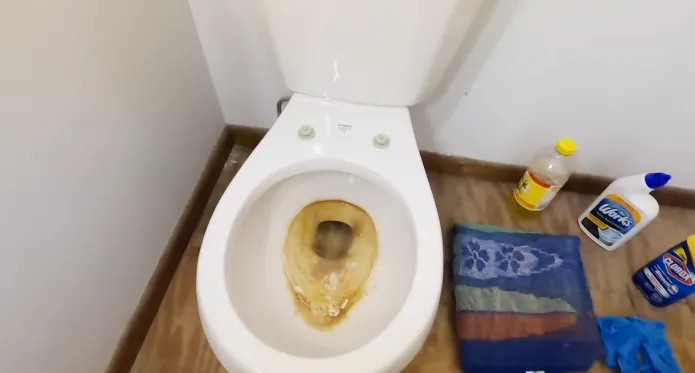Last Updated on March 4, 2023
Do you ever feel like scrubbing your tile grout is an uphill battle? You’ve probably heard about the magical power of toilet bowl cleaner to rid grout of dirt and mildew. But does it really work, or will it end up damaging your grout in the long run?
Toilet bowl cleaners can be a double-edged sword, useful for removing caked-on grime yet damaging to the porous nature of your grout. Basically, it’s not a great idea to use toilet bowl cleaner on tile grouts because of their harsh chemicals.
Knowing their caustic makeup is imperative in keeping surfaces safe during cleaning. There are two common ingredients in toilet bowl cleansers: sodium hydroxide and chlorine bleach. Use these products carefully when tackling tough messes around your house.
Let’s look at the reality behind using a toilet bowl cleaner for cleaning and what other options are available to help make cleaning grout easier.
Why Does Toilet Bowl Cleaner Damage Grout: Factors
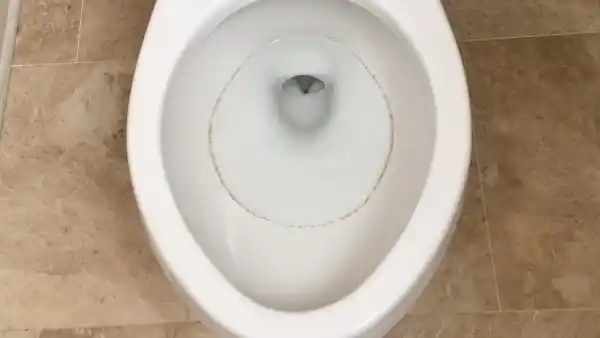
Toilet bowl cleaner is designed to make bathrooms cleaner, but the harsh chemical ingredients in the cleaning product can actually cause damage to the grout. The acids and chlorine content in toilet bowl cleaners are especially destructive and can be dangerous when used too frequently.
First, it is important to understand that acid-based cleaners are very strong in their composition and will slowly corrode grout joints over time if used incorrectly. This is because acids break down the chemical bonds between molecules and can strip away at the protective sealant layer on top of grout joints.
Aside from that, the high levels of chlorine contained in some toilet bowl cleaners can have an even more damaging effect on certain types of grout. Chlorine is a powerful oxidizing agent which breaks down organic material present in many types of grout, leading to discoloration.
The other ingredients present in toilet bowl cleaners can also lead to problems for grout joints over time. Colorings and fragrances may seem harmless at first glance, but they actually contain small amounts of acidic chemicals. Which can affect the structure of grout over time.
Similarly, detergents act as surfactants and will cause residues from these additives to build up on top of grout joints if used too often. If not, remove it quickly with a damp cloth or scrub a toilet brush afterward. Then these residues will create a lasting layer that blocks out moisture which causes cracking and crumbling to occur faster than normal.
Also, it is essential to mention that using too much cleaner around bathroom tiles can negatively impact any nearby grout jointing.
How Do You Clean Grout Without Damaging It?
Keeping your grout in pristine condition can be hard work. Despite this, the rewards of spotless walls and floors are worth it. To preserve its integrity, you need to learn how to clean it without damaging it.
To do it safely, follow these steps:
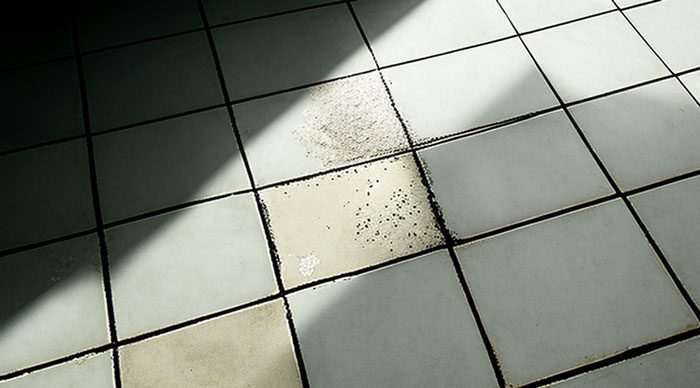
Getting the Surface Ready
Before doing any sort of cleaning on your grout, you must get rid of all the dirt and debris off the surface. To do this, you should start by vacuuming or sweeping away loose particles from the tile surface.
You can then use a damp cloth or sponge to wipe down any remaining dust or dirt that’s left behind. Also, while working on your grout, it is essential to check for any damage that previous cleaning agents or scrubbing tools may have caused. As these could cause further damage if not appropriately addressed.
Making a Soapy Solution

To create a soapy solution that effectively cleans your tile grout, you will need to use an oxygen-based bleach. This can be in the form of hydrogen peroxide, sodium percarbonate, or sodium perborate. You will also need washing soda.
Mix together 3/4 cup washing soda, 1/4 cup hydrogen peroxide, 1 tablespoon of mild dish soap, and a few drops of water in a bucket until it becomes thick like a paste. This will help dissolve built-up dirt and debris while providing a gentle, effective cleaning solution.
Distributing the Solution
Once this soapy solution has been created, you can distribute it to the affected area using either a toothbrush or scouring tool. Depending on how much force is needed to remove the built-up particles.
Allow five to ten minutes before scrubbing. So that any dirt particles have time to dissolve in the mixture before getting scrubbed away from the tile surface.
Gently Scrub Your Joints/Grout
After letting the soapy solution sit for a few minutes, you can scrub gently using circular motions. Make sure not to scrub too hard since this can cause damage by scratching delicate surfaces like glass tiles or marble countertops.
An old toothbrush can help break down stubborn dirt and stubborn stains. Conversely, if you’re dealing with particularly tough areas of dirt or mildew buildup, consider investing in a soft plastic brush. As these brushes are more effective at removing these types of buildups.
If needed, repeat this process several times until all hard water stains are gone before moving on to rinsing off the surface.
Thoroughly Rinse Off Surface
After scrubbing all sections thoroughly, rinse off all surfaces using warm water from either your sink sprayer or garden hose (if outdoors). Ensure all detergent residue has been completely removed. Leaving residue behind can cause discoloration, defeating our goal here.
Use a squeegee if necessary when rinsing off, especially in large areas. Otherwise, just make sure that everything is left completely dry before resealing any joints/grouts as needed after fully drying them out.
Allow the area to dry
To finish off, allow all surfaces to air dry completely before sealing again with either sealant or waterproofing agent (depending on material type). Set up fans if available, or wipe down with a rag/towel afterward.
Just as a precautionary measure, ensure nothing new was left behind after rinsing. Having cleaned the grout, now is the time to seal it so that it stays looking good for a long period.
How Long Do You Leave Toilet Bowl Cleaner On Grout?
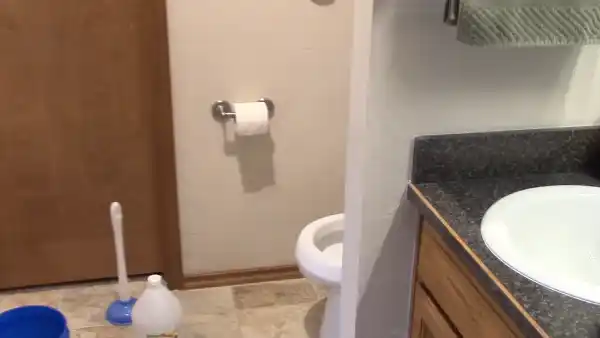
When cleaning grout with a toilet bowl cleaner, it is recommended to let it sit for a minimum of 8 to 10 minutes. This time frame allows the cleaner to do its job without damaging the grout. If left on too long, the cleaner could potentially cause discoloration or weaken the structure of the grout.
Also, it is important to ensure that the floor is dry and free from moisture before applying toilet cleaner. This will prevent any water from diluting the product and lessen its effect on the grout once applied. Then again, some products may be more effective if mixed with warm water before application.
It is recommended to read the instructions of your specific toilet bowl cleaner product before use on grout. So that you are aware of the optimal application time for maximum results without any damage.
Cleaning Tile Grout: How Often Should You Do It?
The frequency at which tile grout should be cleaned depends on two key factors. Where your tiles are located and how often they are used. In areas of frequent use, such as bathrooms, kitchens, or entryways, grout should be cleaned monthly to prevent mold and mildew.
In other areas of your home, such as bedrooms or living rooms with little usage, it is advisable that you clean your tile grout every 3-4 months or when there is visible dirt along the seams of your tiles.
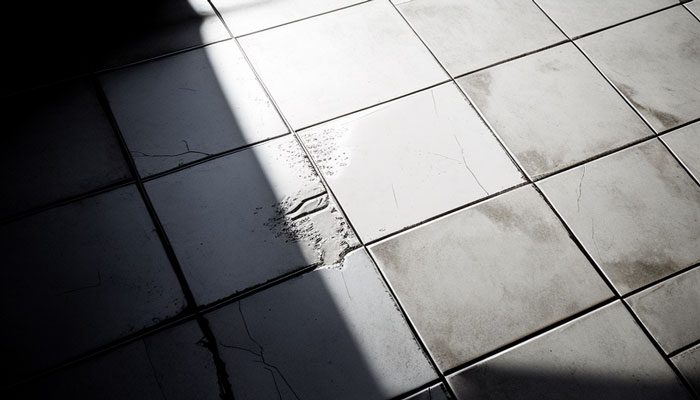
When cleaning tile grout with toilet cleaner, it is important to use a pH-neutral cleaner to preserve its structural integrity and avoid discoloration over time. You can follow the above cleaning method to ensure tile grout is clean, fresh, and safe for long-term use.
What Shouldn’t You Use on Grout?
Regarding what should not be used on grout, it is essential to note that an acidic toilet cleaner such as vinegar should not be used. Vinegar is an acidic substance that can cause the cementitious mortar in the grout to dissolve over time. Leading to significant damage to the grout lines and causing discoloration.
Instead, alkaline cleaners are a much better option for cleaning tile grout. They do not have the same potential for damaging effects on the grout as acidic cleaners do. Some alkaline cleaners also contain special chemicals specifically designed to target and remove dirt, grime, and even mold from grout without harming them.
If you want a superior clean for your tile grout, using an alkaline bathroom cleaner or the above method is definitely recommended.
Do Baking Soda Cleaners Damage Grout?
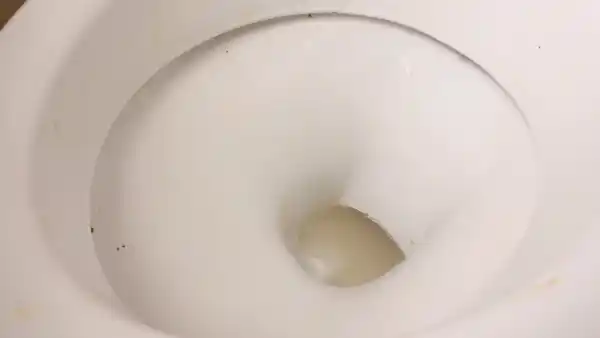
Cleaning with baking soda can effectively remove grout stains, but it must be done carefully to avoid damage. Baking soda is a mild cleaning agent and abrasive, so it should be used gently on surfaces that are not too delicate.
Grout is generally porous, so it can easily absorb spills or dirt, which makes it more susceptible to damage from harsher cleaners like baking soda.
Mix the baking soda with water to create a paste-like solution for cleaning grout, and then use gentle strokes when scrubbing the area. If a stronger cleaner is needed, using an appropriate specialized grout cleaner may be better than using baking soda, as it is specifically designed for the task without risking harm to the surface.
Be sure to rinse any residue of toilet cleaning agents thoroughly with warm water after cleaning with either product to prevent further damage to the grout.
Grout and Tile Deserve More Than Toilet Bowl Cleaners
If you’re looking for a way to keep your grout and tile sparkling, then toilet bowl cleaners are definitely not the answer.
Not only can their use be hazardous for your surfaces, but it could also strip away any sealants or color treatments applied to them as well. So make sure to stick with alternatives that won’t cause more harm than good. To achieve impressive results with minimal effort, try using one of the gentler solutions we mentioned for cleaning your grout and tiles. Skip those harsh chemicals, and give yourself a break while you enjoy beautiful, clean grout.

